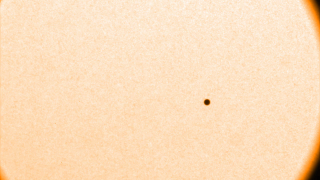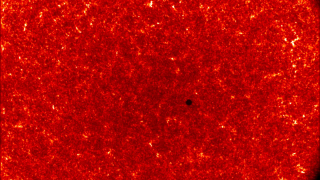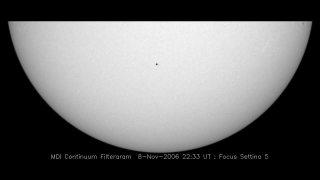Mercury In Our Sights

Skywatchers will have a chance to see Mercury sail across the sun on May 9, 2016.
On May 9, 2016, Mercury will pass between Earth and the sun in a rare astronomical event known as a planetary transit. Starting at 7:16 a.m. EDT, Mercury will appear as a tiny black dot against a blazing backdrop, traversing the sun’s disk over seven and a half hours. Skywatchers in Western Europe, South America, and eastern North America will be able to see the entirety of the transit. Although Mercury whips around the sun every 88 days—over four times faster than Earth—the three bodies rarely align. Because Mercury orbits in a plane 7 degrees tilted from Earth’s orbit, it usually darts above or below our line of sight to the sun. As a result, a Mercury transit happens only about 13 times a century. (The last one was in 2006, and the next one isn’t until 2019.) The views recorded by NASA’s sun-observing spacecraft during the May 9 transit will help scientists to calibrate their instruments and improve their data analysis software. Explore the images to learn more.

During a transit, Mercury appears in silhouette as it travels across the face of the sun. The planet is bottom center in this image.

The path of Mercury during its 2006 transit is shown in this composite image created from observations by the Solar and Heliospheric Observatory.

The diagram above illustrates where Mercury will appear against the backdrop of the sun at various times during the May 9 transit.

Multiple NASA spacecraft, including the Solar Dynamics Observatory (shown above), will collect images of the transit from Earth's orbit.
Credits
Please give credit for this item to:
NASA's Goddard Space Flight Center
-
Writer
- Alison Takemura (USRA)
-
Scientists
- David Rothery (The Open University)
- Zachery Berta-Thompson (MIT)
Release date
This page was originally published on Thursday, April 14, 2016.
This page was last updated on Wednesday, May 3, 2023 at 1:48 PM EDT.


